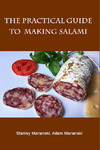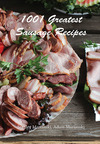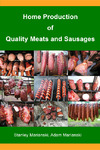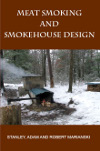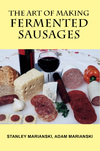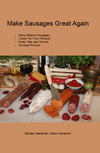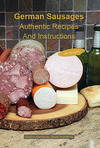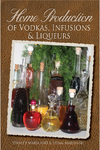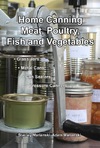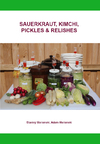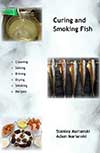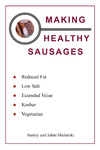Meats and Sausages
Thawing Meat
The purpose of freezing fresh meat is to preserve it for future use, and such meat must be thawed before cooking or further processing. It may be:
- Partially thawed, then processed by cutting or grinding to make processed meats and sausages. A benefit of processing partially frozen meat or frozen fat is inhibiting the growth of bacteria, and clean cuts that result in a better particle definition. Cleanly cut meats will bind together strongly when making formed hams.
- Fully thawed meat will be cooked or processed for sausages in home conditions. However, it must be noted that fully thawed meat must be kept in a refrigerator at 40-50° F (4-5° C).
Meat conducts heat very poorly. Smaller meat cuts will freeze and thaw much faster than large pieces. Thawing is slower than freezing and is best done in a refrigerator. The process would be faster if performed at higher temperatures, but that would create favorable conditions for the growth of bacteria. During thawing, a liquid leaks out from the meat being thawed.

Most people think of this liquid as blood, as it is red in color. This exudate, which is commonly called a drip, is a very valuable liquid, and it can be saved for general cooking or for making sauces and gravy. It is the combination of extracted meat proteins, meat juice, minerals, water, collagen, blood, and other components. This results from ruptured muscle cells and connective tissues due to ice crystals. Smaller crystals were produced, and less damage to the meat’s structure was done if the meat was subjected to fast freezing. As a result, the drip loss would be smaller. Remember that fat contains only around 15% of water, whereas meat contains about 75%. In addition, fat absorbs radiation rapidly and may start cooking before the meat is thawed. When thawing large blocks of meat, it may be advisable to microwave the meat for 10 minutes, then finish thawing in the air or in water.
Thawing Methods
There are three methods of thawing:
- In the air. Warmer air flows into the meat. This common method does not require special equipment and is easy to control. However, the air exhibits very poor conductive properties, so the thawing process is the slowest. A circulating fan will make it faster. Unwrapped meat thawed in the air is a slow process, which, in addition to drip loss, results in more evaporation than other methods.
- In water. Water transfers heat or cold much faster than air, so the meat immersed in water will thaw out much faster. There would be a bigger loss of meat juice unless a plastic bag is used. On the other hand, unwrapped meat will lose less moisture as the evaporation rate depends on temperature and humidity. Since water is 100% humid, the evaporation rate will be zero, and the meat might even gain some moisture. Water thawing is a faster method than thawing in the air.
- In microwave. Radio frequency thawing generates heat inside the meat and is the fastest method of thawing because the heat does not travel from the surface to the center of the meat. Make sure the meat cuts are of uniform size. The internal meat temperature may rise above 50° F (5° C), which is acceptable, as long as the meat does not get cooked.
Inhibiting Bacteria Growth
The whole idea of freezing meat is to prevent its spoilage, and that can only be achieved by preventing bacterial growth. Bacteria don't die when they are frozen with meat; they simply go to a deep sleep and start waking up during thawing, usually at around 40-50° F (4-5° C). As a reminder, the temperature range of 40-140° F (4-60° C) is considered the "danger zone" of meat processing that bacteria find favorable to grow. Before bacteria become active, even when reaching 50° F (5° C), they need to shake off the effects of the deep freeze, which is called a "lag phase." This lag time can last from 1 to 2 hours. Think of a patient who wakes up after general anaesthesia, he feels groggy, confused, and needs some time to recover and be himself again. This means that a whole cut of meat can be temporarily left at above 50° F (5° C), but then must be thawed at below 50° F (5° C). Frozen meat will start thawing on the outside first. This results in moisture and favorable conditions for the growth of bacteria. That is why, at home, thawing should be performed in the air and at refrigerator temperature.
Re-freezing
Thawed meat can be refrozen. What must be noted is that spoilage bacteria have already begun working on the meat in the thawing stage. Depending on how and where it was kept during thawing, its shelf-keeping qualities will be shortened, even if refrozen again.

